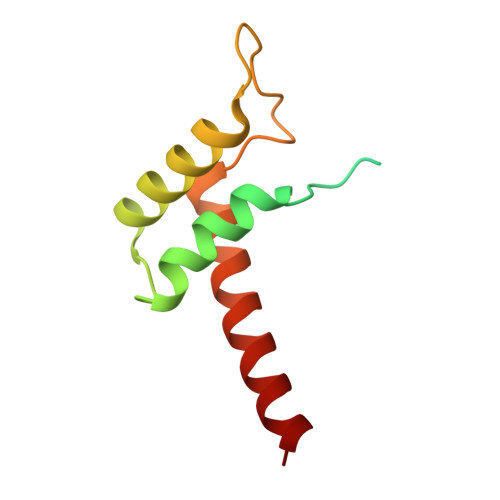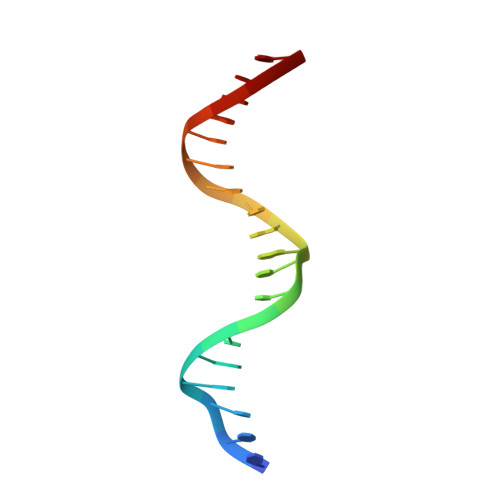HOT1 is a mammalian direct telomere repeat-binding protein contributing to telomerase recruitment.
Kappei, D., Butter, F., Benda, C., Scheibe, M., Draskovic, I., Stevense, M., Novo, C.L., Basquin, C., Araki, M., Araki, K., Krastev, D.B., Kittler, R., Jessberger, R., Londono-Vallejo, J.A., Mann, M., Buchholz, F.(2013) EMBO J 32: 1681-1701
- PubMed: 23685356
- DOI: https://doi.org/10.1038/emboj.2013.105
- Primary Citation of Related Structures:
4J19 - PubMed Abstract:
Telomeres are repetitive DNA structures that, together with the shelterin and the CST complex, protect the ends of chromosomes. Telomere shortening is mitigated in stem and cancer cells through the de novo addition of telomeric repeats by telomerase. Telomere elongation requires the delivery of the telomerase complex to telomeres through a not yet fully understood mechanism. Factors promoting telomerase-telomere interaction are expected to directly bind telomeres and physically interact with the telomerase complex. In search for such a factor we carried out a SILAC-based DNA-protein interaction screen and identified HMBOX1, hereafter referred to as homeobox telomere-binding protein 1 (HOT1). HOT1 directly and specifically binds double-stranded telomere repeats, with the in vivo association correlating with binding to actively processed telomeres. Depletion and overexpression experiments classify HOT1 as a positive regulator of telomere length. Furthermore, immunoprecipitation and cell fractionation analyses show that HOT1 associates with the active telomerase complex and promotes chromatin association of telomerase. Collectively, these findings suggest that HOT1 supports telomerase-dependent telomere elongation.
Organizational Affiliation:
Medical Systems Biology, Faculty of Medicine Carl Gustav Carus, University Cancer Center, Dresden University of Technology, 01307 Dresden, Germany.

















